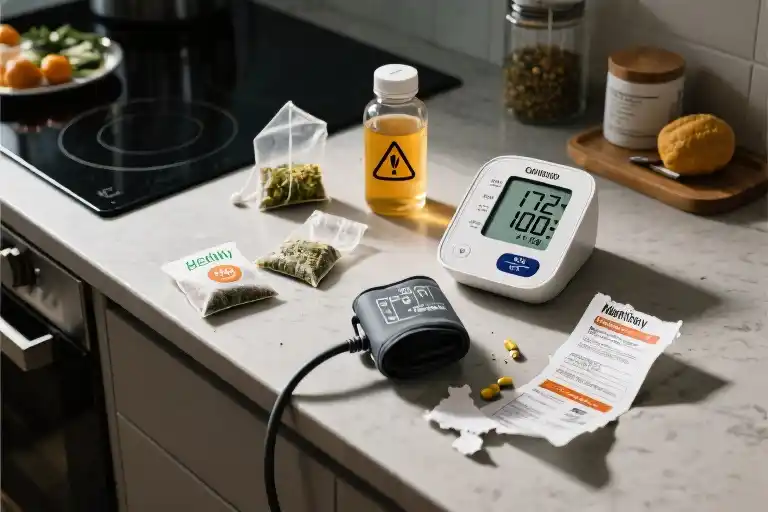Your car’s manufacturer date tells you when it rolled off the assembly line, but reveals nothing about its current engine performance or braking efficiency. Similarly, your birth certificate marks chronological age, while your organs may tell a completely different health story. You could be celebrating your 40th birthday with the energy of a 30-year-old, or unknowingly carrying a heart that functions like a 60-year-old’s.
Groundbreaking research from the University of East Anglia (UEA) reveals this hidden discrepancy between calendar years and biological reality. Their MRI-based studies show class III obesity can age hearts up to 45 years beyond their actual age – a silent health crisis where vital organs deteriorate without obvious symptoms. Like a car’s odometer reflecting true wear better than its production date, your heart’s functional age matters more than birthday candles for predicting health risks.
“We’ve moved beyond counting birthdays to measuring actual heart performance,” explains Dr. Pankaj Garg, UEA’s cardiovascular medicine specialist. Their innovative MRI scans function like a diagnostic time machine, revealing whether your most vital muscle is aging gracefully or racing against time. This revelation particularly impacts those with high blood pressure, diabetes, or obesity – conditions that secretly accelerate cardiac aging while victims remain unaware.
The implications ripple through preventive healthcare. Traditional checkups tracking blood pressure and cholesterol miss this invisible aging process, much like judging a car’s condition solely by its exterior. Modern medicine now offers what amounts to an organ-specific aging calculator – not through invasive procedures, but via accessible MRI technology that maps your heart’s true biological age.
Why Your Heart Age Might Not Match Your Real Age
We often assume our biological age aligns perfectly with the number of candles on our birthday cake. But just like a car’s manufacturing date reveals nothing about its engine condition, your chronological age might be hiding crucial truths about your heart’s actual health. This disconnect between calendar years and functional age is rewriting how we understand cardiovascular wellness.
The Silent Reality of Functional Age
Functional age measures how well your organs perform compared to typical benchmarks for your birth year. While a 45-year-old might celebrate middle age with vibrant energy, their heart could be functioning at a 60-year-old’s capacity due to factors like:
- Cumulative stress on cardiovascular systems
- Cellular wear-and-tear patterns
- Compensatory mechanisms gradually losing efficiency
UEA researchers found this mismatch particularly striking in individuals with metabolic conditions. “The heart ages differently for everyone,” explains Dr. Pankaj Garg. “Two 50-year-olds can have hearts functioning like 40-year-old and 70-year-old organs based on lifestyle and genetics.”
The Limitations of Birthday Math
Traditional age assessments create dangerous blind spots:
- Asymptomatic Decline: 68% of early heart aging shows no noticeable symptoms (UEA data)
- Standard Checkups: Routine physicals often miss functional deterioration until significant damage occurs
- False Reassurance: Normal blood pressure readings don’t guarantee youthful heart function
Consider Sarah’s story: At 42 with normal vitals, her MRI-revealed heart age was 58 due to undetected arterial stiffness. “I felt betrayed by my yearly clean bill of health,” she shares. This underscores why leading cardiologists now advocate for functional age assessments.
MRI: The Heart’s Truth-Teller
Modern MRI technology transcends traditional diagnostics by quantifying:
- Ventricular efficiency
- Blood flow dynamics
- Muscle tissue elasticity
Unlike stress tests or ECGs that capture momentary data, MRI scans create comprehensive 3D maps of heart function. “It’s like comparing a single photograph to a high-definition time-lapse video,” Dr. Garg notes. This allows detection of subclinical changes years before symptoms emerge.
What makes functional age measurement revolutionary isn’t just identifying problems—it’s creating personalized baselines. Your 60-year-old heart might actually be performing exceptionally for its age, or your 40-year-old heart could need urgent intervention. Either way, you gain knowledge no birthday candle can reveal.
Is Your Heart Secretly Aging Faster Than You?
We often assume our bodies age uniformly, but your heart might be telling a different story. While you celebrate birthdays with cake and candles, your cardiovascular system could be quietly accumulating extra miles—especially if you have certain health conditions.
The Silent Accelerators of Heart Aging
Three major factors can put your heart on the fast track to premature aging:
- High Blood Pressure: Like constantly overinflated tires straining a car’s suspension, hypertension forces your heart to work harder, causing structural changes that add years to its functional age.
- Diabetes: Elevated blood sugar acts like corrosive fluid in your cardiovascular system, damaging blood vessels and heart tissue at the cellular level.
- Obesity: Every extra kilogram of body weight requires about 5 additional miles of blood vessels. For those with class III obesity (BMI ≥40), research shows hearts may function as much as 45 years older than chronological age—the equivalent of a 30-year-old with a 75-year-old heart.
What the Numbers Reveal
The University of East Anglia’s MRI studies paint a concerning picture:
| Condition | Average Heart Age Acceleration |
|---|---|
| Mild Obesity | +10 years |
| Type 2 Diabetes | +15 years |
| Hypertension | +20 years |
| Class III Obesity | +45 years |
These aren’t abstract statistics—they represent real functional decline. Your heart muscle stiffens, chambers enlarge, and pumping efficiency drops, often without noticeable symptoms until significant damage occurs.
Why Early Detection Matters
Heart aging follows a silent trajectory:
- Phase 1 (20-30+ years): Microscopic changes in heart tissue and blood vessels
- Phase 2 (10-20 years): Detectable structural changes via MRI
- Phase 3 (1-5 years): Occasional fatigue or shortness of breath
- Phase 4: Overt heart failure symptoms
The window for effective intervention closes rapidly after Phase 2. This explains why many patients report feeling “fine” until suddenly experiencing major cardiac events—their hearts were aging in stealth mode for decades.
MRI technology now allows us to detect these changes during Phase 1, when lifestyle modifications and medications can most effectively slow cardiac aging. It’s like getting a weather forecast before the storm hits, rather than waiting for your roof to leak.
Your next birthday candle count might not reflect your heart’s true age. But with modern detection methods, we no longer have to guess—we can measure, monitor, and most importantly, take action to protect your cardiovascular future.
How MRI Reveals Your Heart’s True Age
Your birth certificate tells one story, but your heart may be writing a completely different narrative. Traditional checkups with blood pressure cuffs and stethoscopes only scratch the surface of cardiovascular health. The University of East Anglia’s breakthrough MRI technology goes deeper – analyzing your heart’s actual functional capacity rather than just counting calendar years.
The Science Behind the Scan
Unlike standard imaging that captures static pictures, UEA’s advanced MRI protocol evaluates three critical aspects of heart function:
- Pumping Efficiency: Measures how effectively your heart chambers fill and eject blood with each beat
- Muscle Elasticity: Assesses the stiffness of heart tissue (a key marker of biological aging)
- Blood Flow Dynamics: Maps oxygen delivery patterns throughout coronary arteries
“We’re essentially creating a functional fingerprint of your heart,” explains Dr. Pankaj Garg, whose team developed the method. “The scan takes about 45 minutes – no injections, no radiation – just detailed imaging that reveals what birthdays can’t.”
Why MRI Outperforms Traditional Tests
| Method | What It Measures | Limitations |
|---|---|---|
| Blood Pressure Check | Current cardiovascular strain | Doesn’t show cumulative organ damage |
| Cholesterol Test | Circulating lipids | Indirect indicator at best |
| Stress Test | Heart performance under exertion | Misses early micro-changes |
| UEA MRI Protocol | Actual tissue health + functional capacity | Provides direct aging metrics |
The technology’s precision comes from proprietary algorithms that compare your results against a database of 10,000+ healthy hearts across different age groups. You’ll receive a clear “heart age” reading – say, 52 when you’re chronologically 45 – with color-coded maps showing which areas show accelerated aging.
What to Expect During Your Scan
- Preparation: No caffeine for 12 hours prior. Wear comfortable clothing without metal components.
- The Procedure: You’ll lie still while the MRI machine captures 3D images of your beating heart. Earplugs dampen the machine’s rhythmic tapping sounds.
- Results: Within 72 hours, you’ll receive:
- A percentage score comparing your heart function to healthy peers
- Visual maps highlighting areas of concern
- Lifestyle recommendations tailored to your results
For those with obesity or hypertension, these scans can detect early tissue changes up to 15 years before symptoms emerge. “It’s like getting a weather forecast for your cardiovascular system,” notes Dr. Garg. “We can now see the storm clouds forming long before the rain starts.”
Beyond the Numbers: Practical Applications
The true value lies in how this data informs action. Patients typically fall into three categories:
- Green Zone (Heart age ≤ actual age): Maintain current healthy habits
- Yellow Zone (1-15 years older): Targeted lifestyle interventions
- Red Zone (>15 years older): Medical consultation + advanced monitoring
Insurance providers in the UK are beginning to recognize these scans as preventive care, with some offering subsidized screenings for high-risk individuals. While not yet standard in annual physicals, the test is available at major medical centers specializing in cardiovascular prevention.
This technology doesn’t just diagnose – it empowers. When 58-year-old marathon runner Martin discovered his heart age was actually 42, it validated his training regimen. Conversely, a 36-year-old teacher learned her sedentary habits had aged her heart to 51, prompting immediate dietary changes and supervised exercise.
“Knowledge of your heart’s true age is the ultimate motivator,” observes Dr. Garg. “People respond differently to ‘your cholesterol is high’ versus ‘your heart is operating like someone 20 years older.’ The latter creates real behavioral change.”
Take Control of Your Heart’s True Age: 3 Actionable Steps
Knowing your heart’s functional age is just the first step. The real power lies in what you do with that information. Whether your heart is aging faster than expected or you simply want to maintain its youthful function, these three strategies put you back in the driver’s seat of your cardiovascular health.
Step 1: Schedule a Heart Age Assessment
For high-risk individuals—especially those with:
- BMI over 30 (class I obesity or higher)
- Diagnosed hypertension or diabetes
- Family history of early heart disease
Screening frequency:
- Annual MRI-based heart age assessment if accessible
- Biannual cardiac CT scans as alternative
- Quarterly blood pressure/glucose monitoring between imaging tests
“Think of it as your heart’s annual performance review,” suggests Dr. Garg’s team at UEA. Early detection creates opportunities for intervention before symptoms appear.
Step 2: Adopt Heart-Younging Daily Habits
Movement matters most:
- 150 minutes weekly of zone 2 cardio (brisk walking, cycling)
- Resistance training 2x/week preserves vascular elasticity
- Avoid prolonged sitting—set hourly movement reminders
Nutrition upgrades:
- Mediterranean diet focus: olive oil, fatty fish, leafy greens
- Reduce processed foods (especially cured meats and refined carbs)
- Dark chocolate (85%+) for flavonoid benefits
Stress and sleep hygiene:
- Practice paced breathing (4-7-8 technique)
- Prioritize 7-9 hours of quality sleep
- Consider HRV (heart rate variability) tracking
Step 3: Build Your Prevention Network
- Medical partnerships:
- Locate MRI facilities offering functional age assessments
- Share results with a cardiologist or functional medicine practitioner
- Community support:
- Join heart health programs at local hospitals
- Participate in walking groups or cooking classes
- Tech-assisted monitoring:
- Wearables with ECG capabilities (e.g., FDA-cleared devices)
- Blood pressure cuffs with cloud-connected data tracking
Remember: Heart age isn’t fixed. A 2023 UEA follow-up study showed participants who implemented these strategies reduced their cardiac functional age by an average of 8 years within 18 months.
Next steps resources:
- UEA Cardiac Aging Research Portal
- American Heart Association’s Find a Scan Tool
- Mediterranean Diet Meal Planner
Your heart’s birthday matters less than how it feels today—and these steps ensure it keeps feeling younger.
Your Heart’s True Age: A Wake-Up Call for Proactive Health
That number on your birthday cake tells one story, but your heart may be writing a completely different narrative. The groundbreaking research from the University of East Anglia reveals what cardiologists have long suspected: our organs keep their own time, and for millions living with obesity or chronic conditions, that internal clock might be ticking alarmingly fast.
Why Your Heart Age Matters More Than Candles
Think of your heart age as your body’s internal odometer. While chronological age marks the passage of time, functional age reveals the mileage. This distinction becomes crucial when studies show that:
- Class III obesity can add 45 years to your heart’s functional age
- 68% of hypertension patients have hearts 10+ years older than their biological age
- Diabetes accelerates heart aging by 8-15 years on average
These aren’t abstract numbers—they’re direct measurements of how efficiently your heart pumps blood, delivers oxygen, and maintains rhythm. The UEA’s MRI technology now makes these invisible processes measurable, transforming how we understand cardiovascular health.
From Awareness to Action: Your Heart Health Roadmap
- Know Your Numbers
- Schedule a consultation about MRI heart age assessment
- Monitor blood pressure and glucose levels monthly
- Track BMI and waist circumference changes
- Adopt Heart-Younging Habits
- Mediterranean diet principles (olive oil, nuts, fatty fish)
- 150 minutes weekly of zone 2 cardio (brisk walking, cycling)
- Stress-reduction techniques like paced breathing
- Become Your Own Advocate
- Ask healthcare providers about functional age assessments
- Share UEA study findings with at-risk family members
- Consider joining cardiac aging prevention studies
The Silent Advantage of Early Knowledge
What makes this MRI breakthrough revolutionary isn’t just its precision—it’s the window of opportunity it creates. Unlike traditional warning signs (chest pain, shortness of breath) that appear after damage occurs, heart age assessment provides:
- Pre-symptomatic detection of aging patterns
- Personalized intervention timelines
- Motivational benchmarks for lifestyle changes
Dr. Garg’s team emphasizes that for every year of reduced heart age, patients potentially gain:
| Improvement | Cardiovascular Benefit |
|---|---|
| 1-year heart age reduction | 8% lower stroke risk |
| 3-year reduction | 19% fewer cardiac events |
| 5-year reduction | 34% improved exercise capacity |
Leaving You With This
When you next glance at a calendar, remember: your heart doesn’t care what year it is—it cares how you’ve lived those years. The most empowering aspect of heart age science? Unlike birthdays, this number isn’t fixed. With today’s knowledge and tomorrow’s choices, you hold the pen to rewrite your heart’s story.
Could your heart be sharing its age with someone decades older? The answer might surprise you—and knowing it could change everything.




